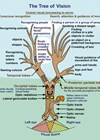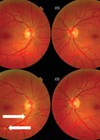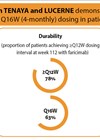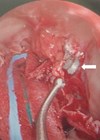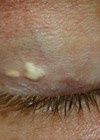Ophthalmology archive for August 2022
FAQs about cerebral visual impairment (CVI): identifying and helping those affected
Cerebral visual impairment is common in both adults and children, yet the diagnosis can easily be missed unless one is tuned into the presenting features. This article provides a succinct introduction to this important topic. What is vision? Vision is...
Understanding spaceflight-associated neuro-ocular syndrome (SANS): what do we know?
Introduction Formerly known as visual impairment and intracranial pressure syndrome (VIIP), space-related neuro-ocular syndrome (SANS) is defined by a collection of ophthalmic and neurological findings in astronauts after long-term spaceflight [1]. Changes in the eyeball, such as hyperopic shift, during...
Broadening of treatment options for potentially blinding retinal conditions
Rod McNeil provides an update on a promising bispecific antibody recently approved for treatment of neovascular age-related macular degeneration (nAMD) and diabetic macular oedema (DMO) and considers emerging developments in biosimilars to established anti-vascular endothelial growth factor (anti-VEGF) therapies, including...
Trans-sinus endoscopic removal of retrobulbar air gun pellet within the orbital apex
Injuries to the eye have been widely reported in medical literature due to a variety of mechanisms causing significant morbidity and occasional unexpected mortality for the patient [1]. It is often wrongly assumed that air gun pellets lack this potential....
Triamcinolone (TA) deposits following subcutaneous injection to treat chalazion
Chalazia are chronic lipogranulomatous inflammations of the eyelid secondary to a blocked meibomian gland. Whilst most resolve spontaneously, certain chalazia warrant treatment. Options include incision and curettage (I&C), lesion excision, intralesional steroid injections, and botox injections [1]. I&C is usually...


